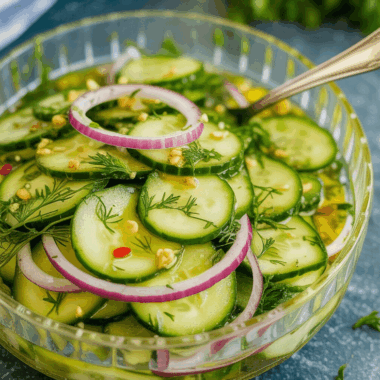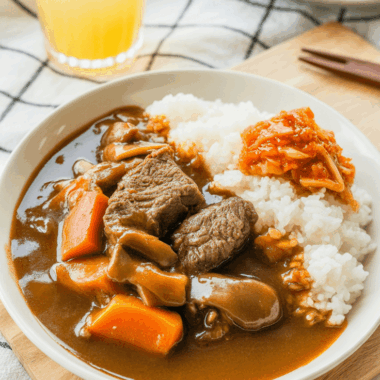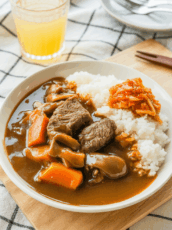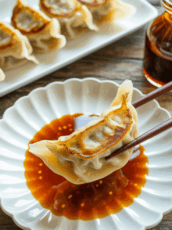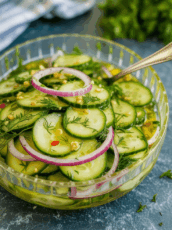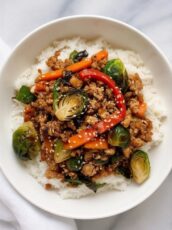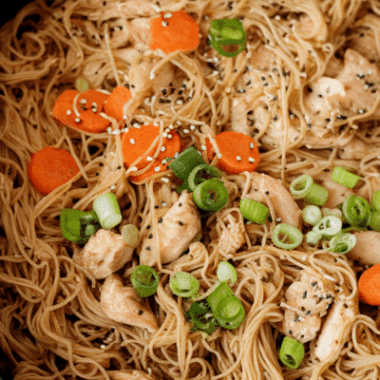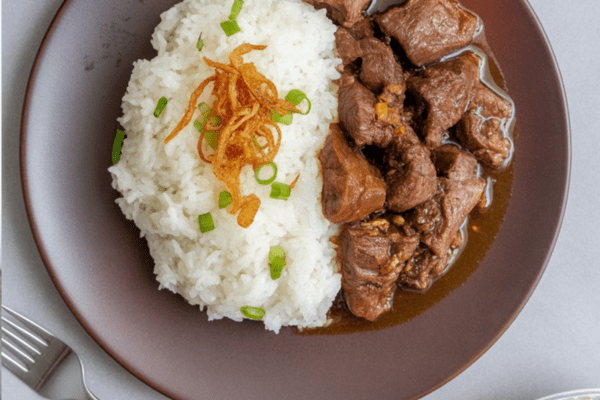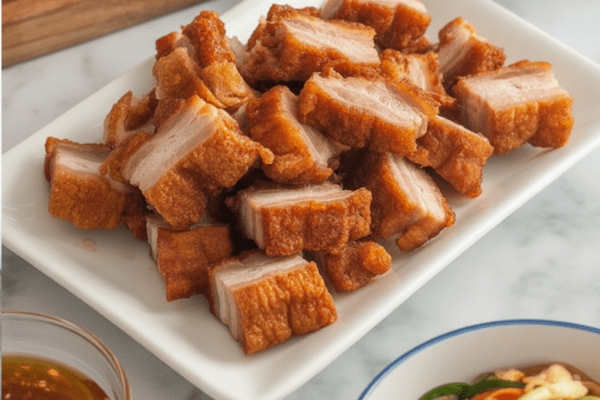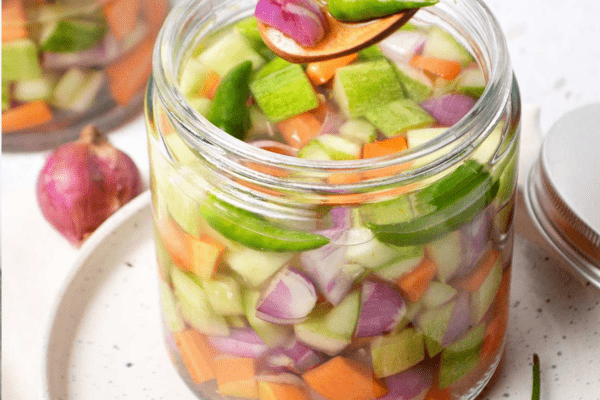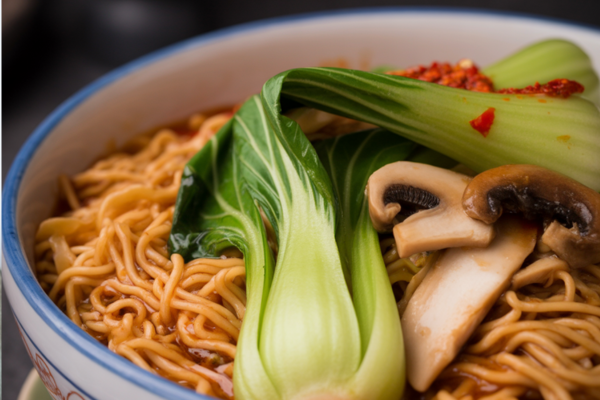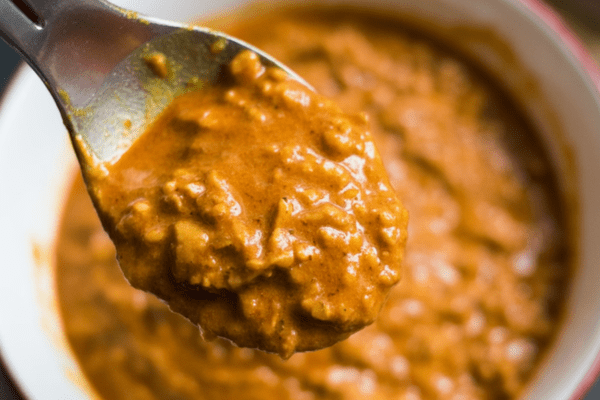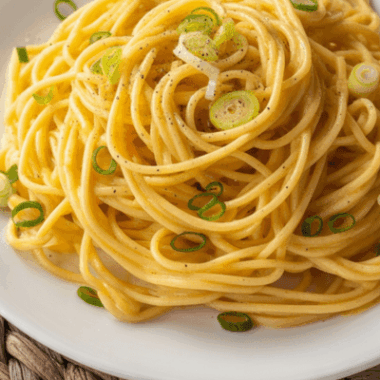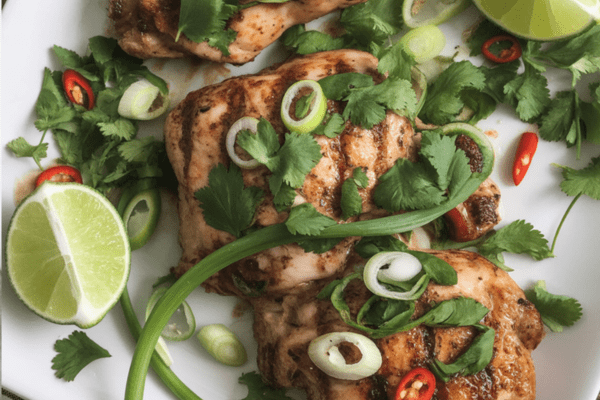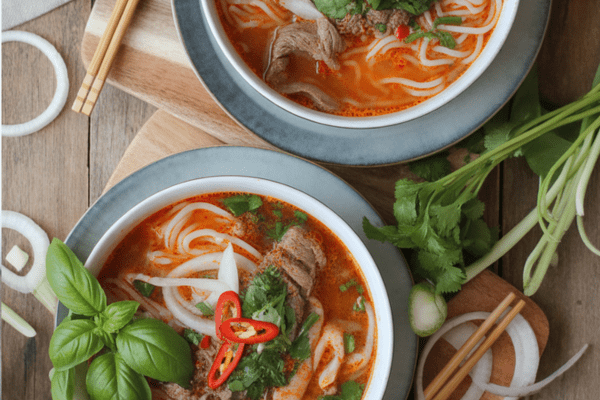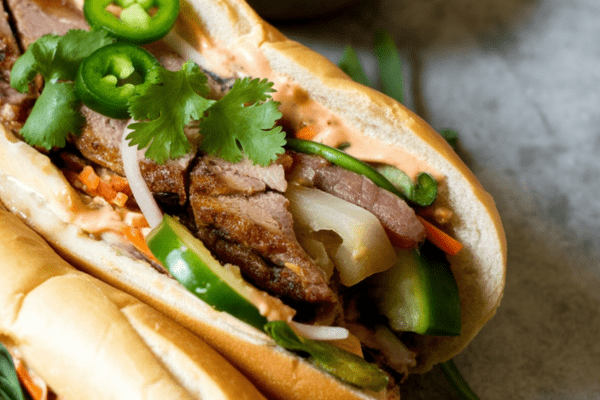There’s something really comforting about standing around a kitchen counter, folding dumplings with people you love. I still remember the first time I tried making gyoza—it was a quiet winter evening, and I had some leftover ground pork and a half head of cabbage staring at me from the fridge. Since then, gyoza nights have become a little tradition in our home. There’s always laughter, flour on the counter, and someone accidentally overstuffing a wrapper. That’s part of the fun.
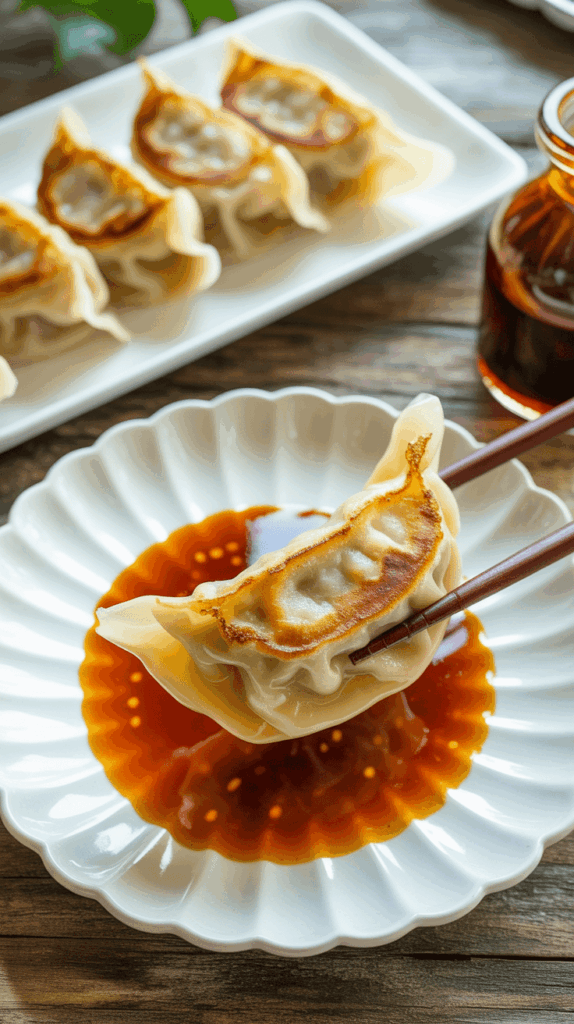
These Japanese-style potstickers are golden and crispy on the bottom, juicy and savory on the inside, and best served with a punchy dipping sauce. If you’ve only ever eaten frozen gyoza or ones from restaurants, you’re in for a real treat.
What Are Gyoza?
Gyoza are the Japanese version of Chinese jiaozi — brought over after World War II and lovingly adapted in Japanese kitchens ever since. The wrappers are thinner, the filling is more finely chopped, and they’re typically pan-fried to give them that signature crispy base. It’s the kind of dish that works just as well for weeknight dinners as it does for weekend get-togethers.
Why I Keep Coming Back to This Recipe
- That crispy-bottom, juicy-middle combo. I don’t think I’ll ever get tired of the contrast between the crackly base and the soft, flavorful filling. It hits just right every time.
- All-in-one bites. You’ve got meat, veggies, and carbs wrapped into one perfect little dumpling. Add a sauce, and it’s game over.
- It’s kind of a social event. Folding gyoza is more fun when there’s someone next to you doing it too. I’ve done this with family, friends, and even a neighbor who randomly dropped by—and it always leads to good food and better memories.
- Easy to customize. Once you get the hang of the folding, you can play around with the filling however you like. Sometimes I sneak in some chopped kimchi or add more mushrooms when I’m feeling extra savory.
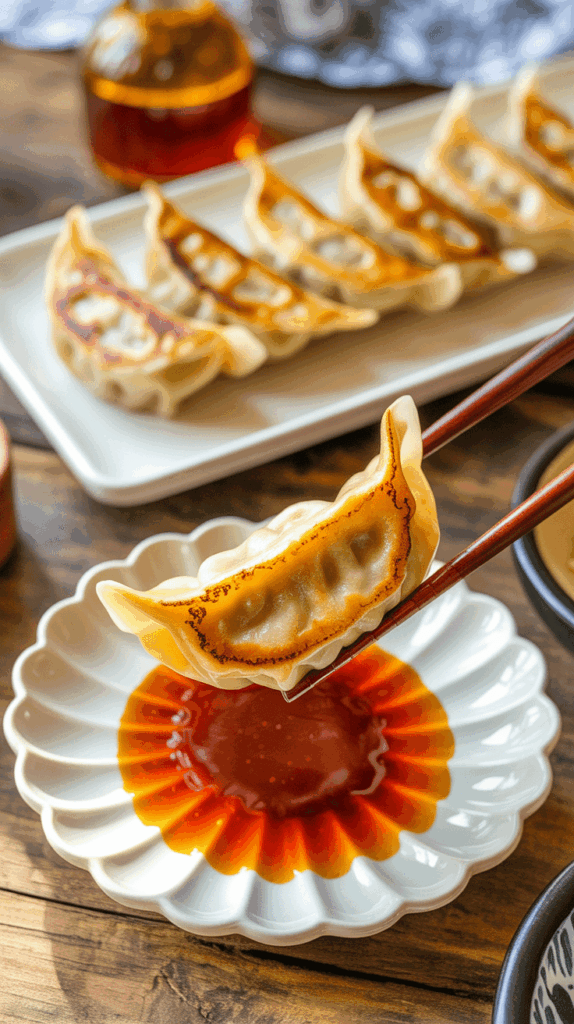
Ingredients You’ll Need
- Gyoza wrappers – Go for the Japanese-style ones if you can find them. They’re thinner and fry up beautifully.
- Ground pork – Classic and juicy, but feel free to swap for chicken, turkey, or even tofu.
- Green cabbage – Adds crunch and volume. Salt it first to draw out moisture.
- Green onions, garlic, ginger – The aromatic trio that makes everything taste better.
- Shiitake mushrooms – I love the meaty texture they bring. Dried ones work too, just soak them first.
- Soy sauce, sake, sesame oil, black pepper – For seasoning the filling.
- Neutral oil + water + extra sesame oil – For pan-frying and steaming.
Dipping sauce:
- Soy sauce + rice vinegar + Japanese chili oil (la-yu) — spicy, tangy, and perfect.
Smart Ingredient Swaps
- No green cabbage? Napa cabbage works just fine. Just make sure to squeeze out that moisture well.
- No sake? You can skip it. The garlic and ginger do a great job of keeping any strong meat flavors in check.
- No meat? I’ve done versions with just mushrooms and tofu, and they turn out deliciously hearty and light.

Step-by-Step: Making Gyoza at Home
1. Prep the Filling
Salt the chopped cabbage and let it sit for a bit while you chop the rest. Squeeze out the water—it’s amazing how much liquid hides in cabbage. Mix everything with the pork and seasonings. I like to use my hands (with gloves) to knead it until it gets sticky and pale. That texture is key.
2. Fold Like a Pro
Scoop a bit of filling into the center of a wrapper (don’t overdo it—less than 1 tbsp is plenty). Wet the edge with water, fold it in half, and start pleating from the center out. My first few dumplings always look like wonky purses, but they taste just as good.
3. Pan-Fry and Steam
Use a good nonstick or carbon steel skillet. Once they’ve browned on the bottom, pour in water and cover to steam. Finish with a drizzle of sesame oil for that golden crispness.
Real-Life Tips From My Kitchen
- Keep the wrappers moist. Cover them with a damp towel while you work or they’ll dry out fast.
- Don’t wait to cook or freeze. The longer they sit, the wetter the wrappers get. I usually freeze half right away on a tray, then pop them into a zip bag once firm.
- Perfect freeze method: Always freeze them in a single layer first, or you’ll end up with a solid dumpling iceberg.
Play Around With These Variations
- Add garlic chives if you’re into that bold flavor—I skip them when I’m cooking for kids.
- Make it vegetarian. Swap pork for a combo of tofu and mushrooms. A little miso paste mixed into the filling also gives great depth.
- Change the dipping sauce. Sometimes I add a dash of yuzu kosho or mix in a little miso for a different kick.
- Try pleating to one side. It’s how many ramen shops do it—and looks a bit fancier on the plate.
What To Serve With Gyoza
Gyoza goes with more than just soy sauce. Here’s how I serve it around here:
- With ramen – Especially on lazy weekends when we do gyoza + instant tonkotsu ramen. It hits every comfort note.
- In a hot pot – I toss a few into our winter nabe for that bonus surprise bite.
- Next to karaage – For an all-out Japanese-style dinner.
- Cold the next day in a lunchbox – Honestly, leftover gyoza in a bento is the reason I always make extra.
How I Store Them
Uncooked: I lay them out on a tray (no touching!) and freeze until solid. Then into a zip bag they go. They cook great straight from frozen—just add a bit more steam time.
Cooked leftovers: They last about 3 days in the fridge. I reheat in a skillet to get that bottom crisp back.
Leftover filling? I roll it into little meatballs, pan-fry them, and use them in miso soup or as rice bowl toppings.
Spare wrappers? I stuff them with cheese and pan-fry. My cheat-day snack!
Common Questions
Can I make gyoza ahead of time?
Yes! I often fold a batch the night before and freeze them. They’re a lifesaver on busy nights.
Do I have to use pork?
Not at all. Chicken, turkey, and beef all work. Just keep an eye on moisture levels.
My wrappers keep tearing. Why?
They might be drying out. Keep them covered and don’t overfill them.
Gyoza (Japanese Potstickers)
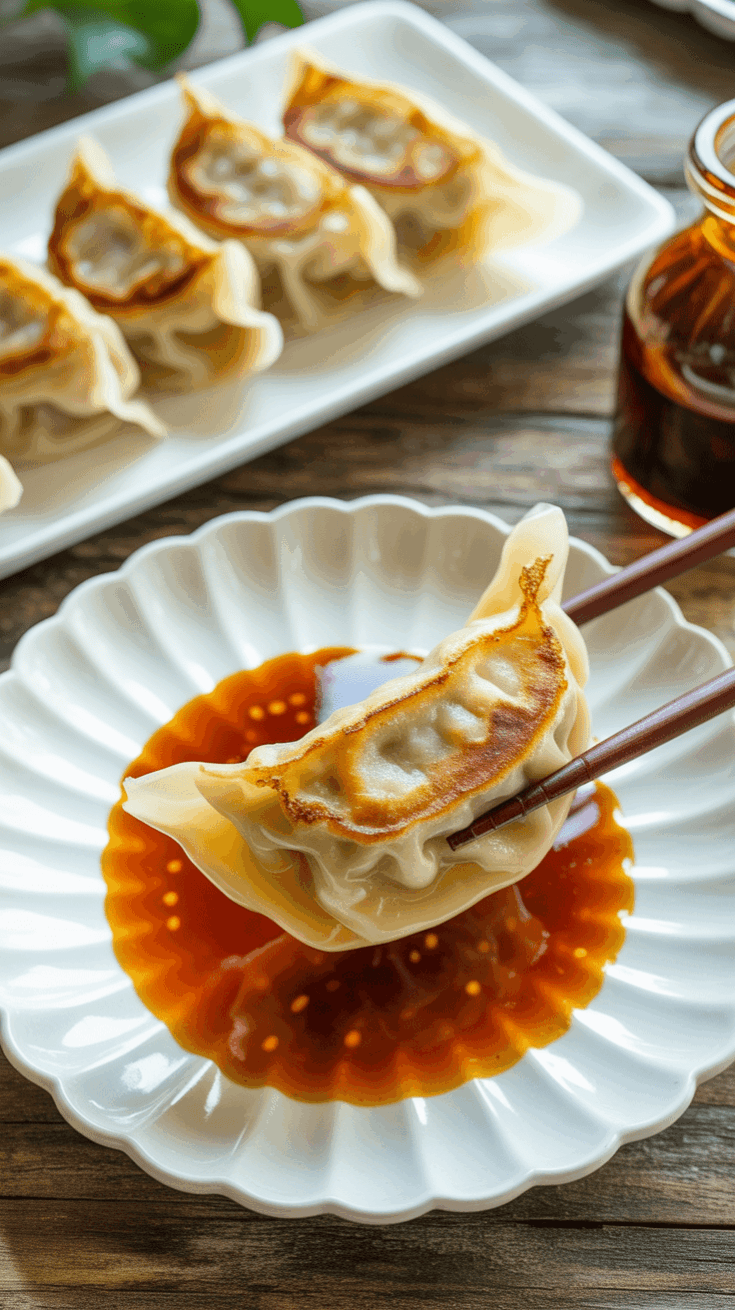
Delicate wrappers filled with juicy pork, fragrant aromatics, and tender cabbage—pan-seared to golden perfection. These Japanese gyoza are the kind of dumplings you’ll want to make in big batches, freeze, and enjoy whenever cravings hit. With a savory dipping sauce on the side, they’re the ultimate homemade treat that’s easier than you think!
Ingredients
Filling
- ½ lb ground pork
- ¾ lb green cabbage (about ¼ large head), finely chopped
- 2 green onions, minced
- 2 shiitake mushrooms, finely diced
- 2 garlic cloves, minced or pressed
- 1 tsp fresh grated ginger (with juice)
- 1 tsp kosher salt (for wilting cabbage)
Seasoning
- 2 tsp soy sauce
- 2 tsp toasted sesame oil
- 2 tsp sake (optional)
- ⅛ tsp freshly ground black pepper
To Assemble
- 1 package gyoza wrappers (about 52 pieces)
- Water (for sealing the edges)
- To Fry (Per Batch)
- 1 Tbsp neutral oil
- 4 Tbsp water
- 1 tsp toasted sesame oil
Dipping Sauce (Per Serving)
- 1 Tbsp soy sauce
- 1 Tbsp unseasoned rice vinegar
- ⅛ tsp Japanese chili oil (la-yu), optional
Instructions
- Prepare the Cabbage: Finely chop the cabbage, sprinkle with salt, and massage gently to release moisture. Let it rest while you prepare the other ingredients.
- Make the Filling: In a large bowl, combine ground pork, green onions, mushrooms, garlic, ginger, and all seasoning ingredients. Squeeze out the excess water from the salted cabbage and add it to the bowl. Mix everything thoroughly until sticky and well incorporated.
- Wrap the Gyoza: Set up a small bowl of water and a tray dusted with cornstarch or lined with parchment. Keep the wrappers covered with a damp towel to prevent drying. Place a wrapper in your hand, add a small spoonful of filling in the center, and flatten it slightly. Wet the edge, fold in half, and pleat from both sides toward the center, pressing firmly to seal.
- Freeze (Optional): To store for later, freeze the uncooked gyoza in a single layer until solid, then transfer to a freezer bag. They’ll keep well for up to a month.
- Pan-Fry the Gyoza: Heat 1 Tbsp oil in a nonstick or carbon steel pan over medium heat. Arrange gyoza flat side down in a single layer. Cook for 2–3 minutes until the bottoms are golden. Pour in 4 Tbsp water, cover with a lid, and steam for another 3 minutes (add 1–2 minutes if frozen). Uncover, drizzle 1 tsp sesame oil around the edges, and let cook until bottoms crisp up again.
- Serve: Serve hot with dipping sauce made by combining soy sauce, vinegar, and a touch of chili oil if desired.
Notes
- Cooked gyoza: Refrigerate up to 3 days or freeze for up to a month.
- Leftover filling: Form into mini patties or meatballs and pan-fry.
- Extra wrappers: Fill with cheese and pan-fry for a quick snack!
- Don’t overstuff the wrappers—air pockets can cause them to burst while cooking.
- Keep wrappers covered to prevent drying out while you work.
- Let the gyoza rest for a minute after cooking for easier removal from the pan.
Nutrition Information:
Yield: 52 Serving Size: 1Amount Per Serving: Calories: 28Total Fat: 2gSaturated Fat: 0gTrans Fat: 0gUnsaturated Fat: 1gCholesterol: 4mgSodium: 62mgCarbohydrates: 2gFiber: 0gSugar: 0gProtein: 1g
Asianplated.com, occasionally offers nutritional information for recipes contained on this site. This information is provided as a courtesy and is an estimate only. This information comes from online calculators. Although allchickenrecipes.com attempts to provide accurate nutritional information, these figures are only estimates.
Let me know how your batch turns out. Gyoza-making is one of those little cooking rituals that gets better each time. Whether you’re folding solo with your favorite playlist on or roping in family members for a dumpling night, it’s the kind of recipe that leaves more than just a good taste in your mouth—it creates moments.
Try other Japanese recipes:

